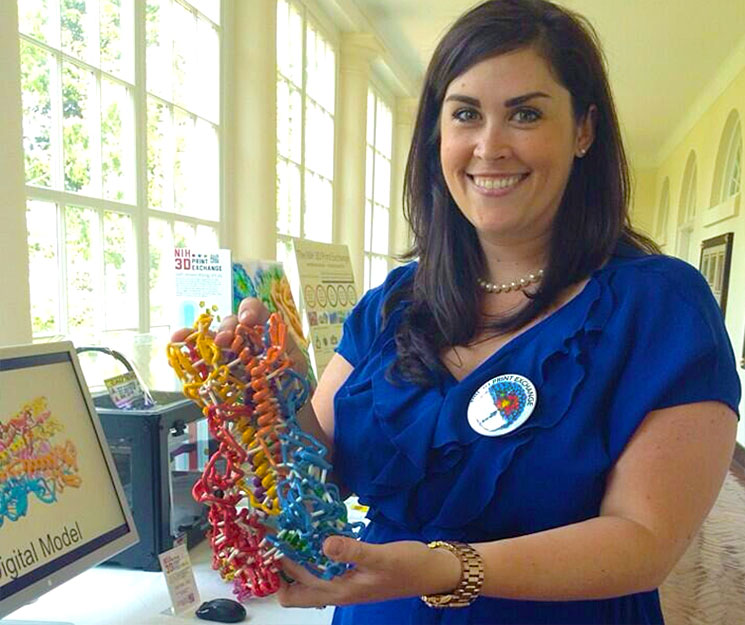Our News
Dr Meghan Coakley invites you to use the NIH 3D Print Exchange!

It has been an exciting time for Dr Meghan Coakley, a recent PhD graduate from Dr Cora O’ Neill’s lab in the School of Biochemistry and Cell Biology.
It has been an exciting time for Dr Meghan Coakley, recent PhD graduate from Dr Cora O’ Neill’s lab in the School of Biochemistry and Cell Biology. The week after her PhD graduation ceremony at UCC, Meghan was a featured exhibitor at the White House Maker Faire in Washington DC as part of the official launch of the NIH 3D Print Exchange.
Press Release at http://www.nih.gov/news/health/jun2014/niaid-18.htm
Meghan is a Scientific Program Analyst in the Bioinformatics and Computation Biosciences Branch at the National Institute of Allergy and infectious Diseases (NIAID), US National Institutes of Health (NIH). She began working there while completing her PhD thesis at home in the US, after enjoyable years as a PhD and MSc (Applied Biotechnology) graduate student in the School of Biochemistry and Cell Biology, where she worked on projects in Alzheimer’s Disease and Neurodegeneration.

Dr Meghan Coakley (left) and Dr Darrell Hurt (right) of the NIH 3D Print Exchange, with NIH Director Dr Francis Collins (centre), at the White House Maker Faire on 18 June 2014.
In her new role, Meghan and her colleagues developed the NIH 3D Print Exchange, where she is a co-lead on the project. This is a public website that enables users to share and download 3D print files related to health and science. The files can be used, for example, to print models of cells, bacteria, human anatomy and customised laboratory equipment. NIH Director Francis Collins, M.D., Ph.D., says: “3D printing is a potential game changer for medical research”.

The mission of the NIH 3D Print Exchange site is to provide users – scientists, educators, students, DIYbio and 3D print enthusiasts – with high-quality, scientifically accurate models of molecules, bacteria, cells, and anatomy, and more which can be utilized for scientific visualization and discovery. For researchers, the most exciting part is the collection of free tools built into the site, which eliminate the need for any 3D modeling design experience: For example, a registered user can upload a CT scan, molecular structure file, or volumetric data, such as a microscopy image stack, and in minutes the site generates files that are ready to download and compatible with 3D printers. To help new users, the site also features video tutorials on 3D modeling software, and a discussion forum to promote collaboration.
Meghan and her colleagues are eager to grow the community of users on the Exchange and she is planning interactions with her former supervisor, Dr Cora O’ Neill, using this platform. Meghan would especially love to interact with the School of Biochemistry and Cell Biology in the future, to see models and hear feedback from former colleagues and current staff and students at UCC.
For more information, contact Meghan.
